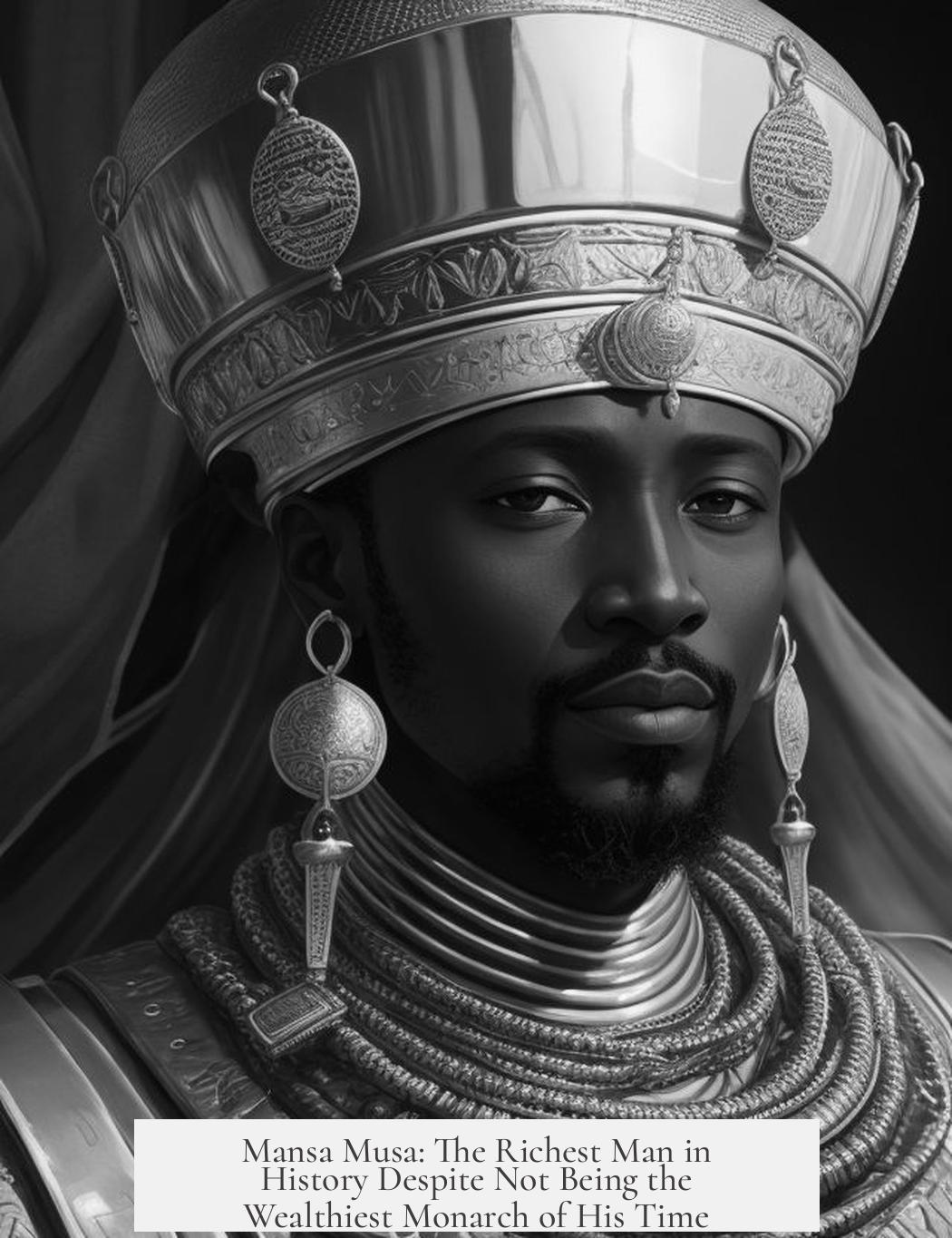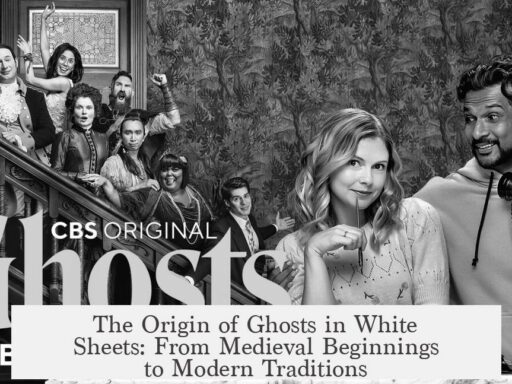Mansa Musa is considered the richest person in history mainly due to the extraordinary extent of his wealth, the global impact of his pilgrimage, and the lasting historical narrative that highlights these feats. However, during his lifetime, other monarchs likely possessed comparable or greater wealth that remains less documented or publicized. This distinction explains why he is often labeled as the richest in history but was not necessarily the richest monarch among his contemporaries.
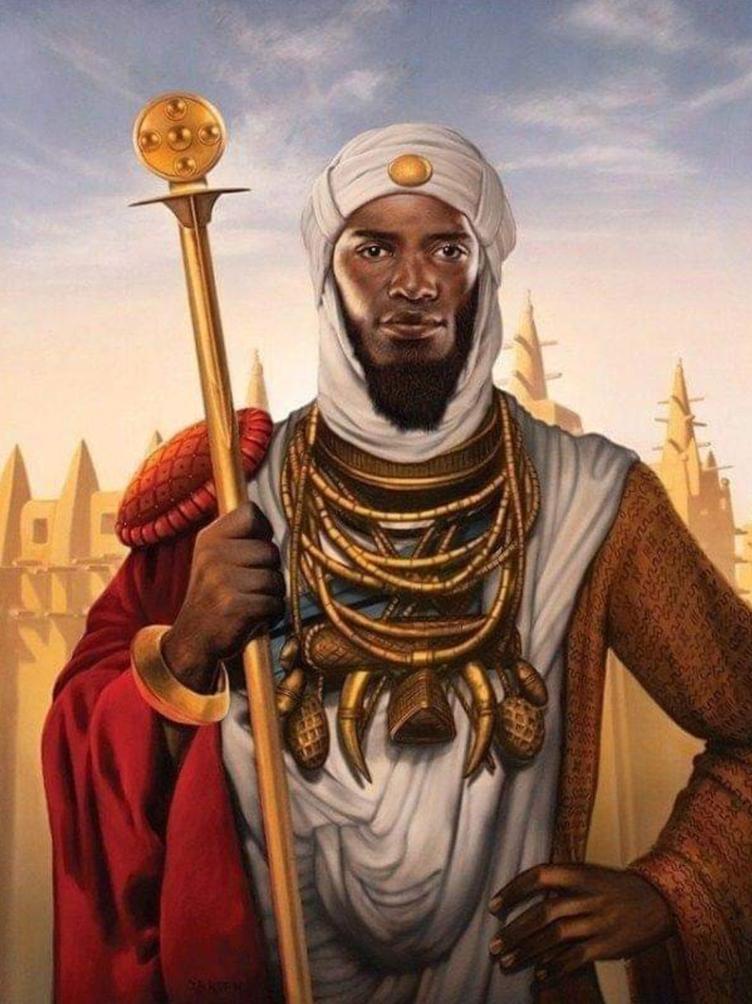
Mansa Musa ruled the Mali Empire in the early 14th century, a region rich in gold and salt—two highly valuable commodities of that era. His wealth largely stemmed from controlling extensive gold mines and the thriving trans-Saharan trade routes. The exact monetary value is difficult to quantify, but it remains clear his gold reserves were unparalleled in Africa and notable globally.
His famous pilgrimage (Hajj) to Mecca in 1324 dramatically showcased this wealth. He traveled with a massive entourage and distributed gold generously throughout his journey, fueling legends that amplified his reputation. This public display created one of the earliest known global perceptions of individual wealth, inspiring tales that continue today.
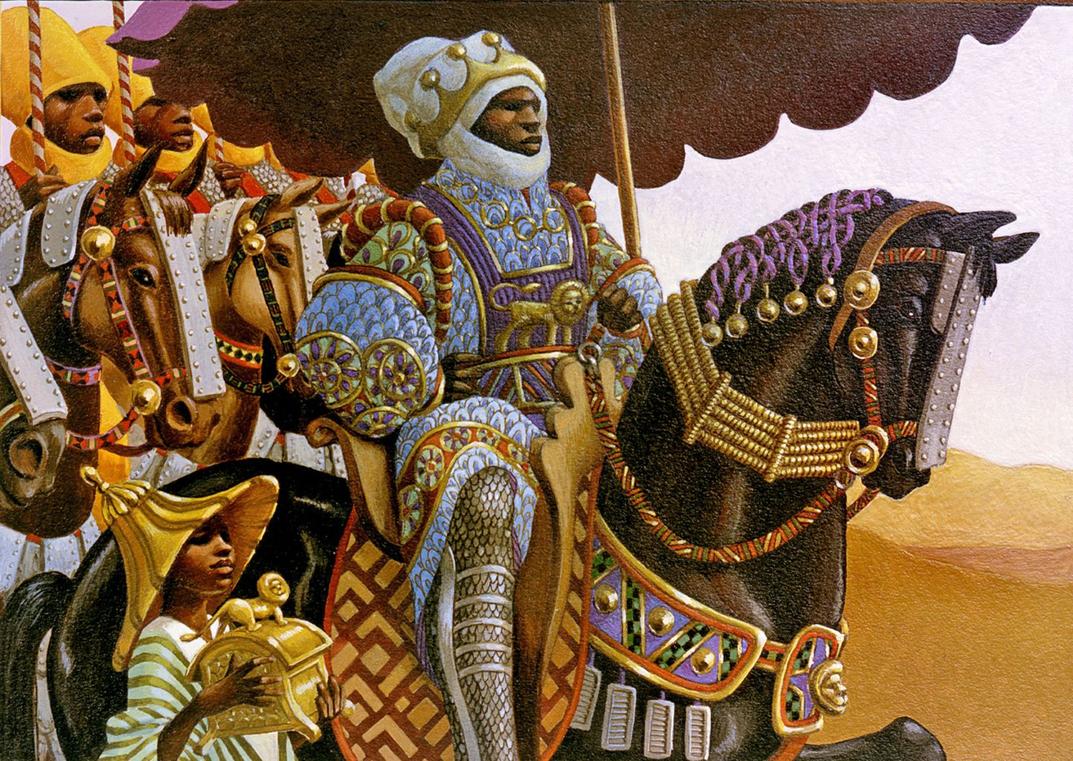
Contrastingly, other monarchs during Mansa Musa’s time had substantial riches as well. Wealth in medieval empires such as the Yuan dynasty in China or the Mamluk Sultanate also stemmed from diverse sources like treasure hoards, land, tribute, and trade. However, these riches were often less overtly displayed or recorded in sources accessible to later historians.
Assessing wealth from the distant past involves many challenges:
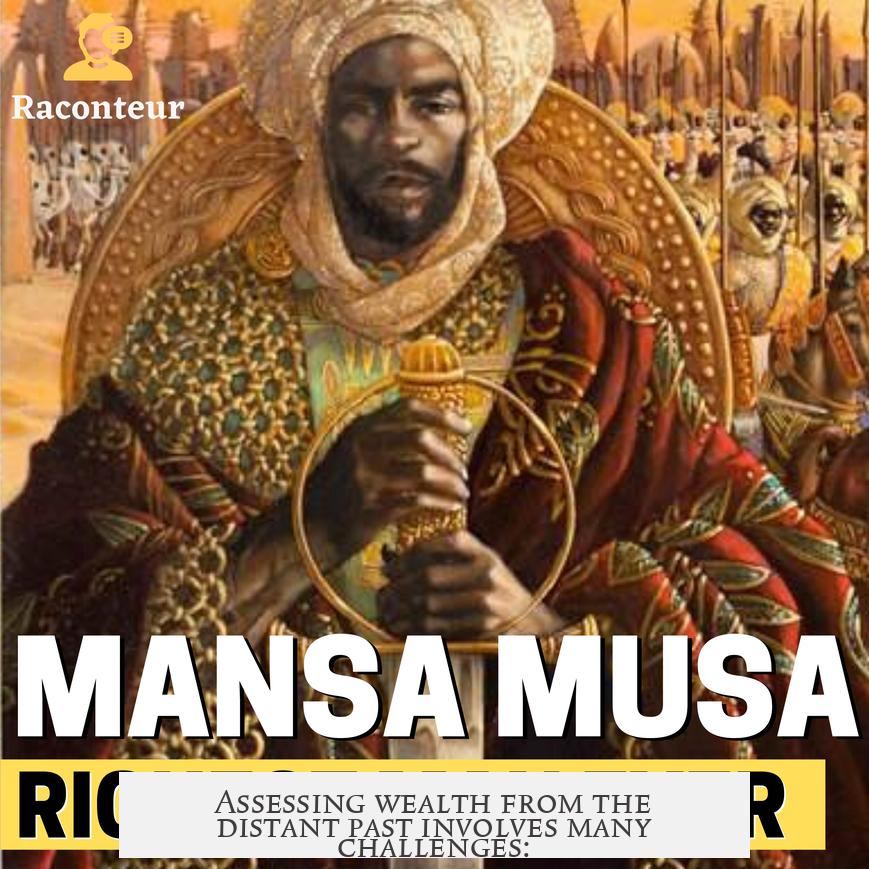
- Valuing commodities over time and across cultures differs significantly.
- Historical records of wealth are often incomplete or biased.
- Converting vast and diverse assets into a single numeric value proves unreliable.
Because of these challenges, Mansa Musa’s fame is partly symbolic. His wealth narrative holds a powerful place in history due to his pilgrimage’s visibility and its direct impact on economies along his route, such as temporarily destabilizing gold prices in Egypt.
Popular culture tends to simplify these complexities, focusing on his immense gold wealth and grand procession, making his name synonymous with immense wealth itself. This popular perception often overshadows the debate about whether he was the richest monarch at the same time or across history.
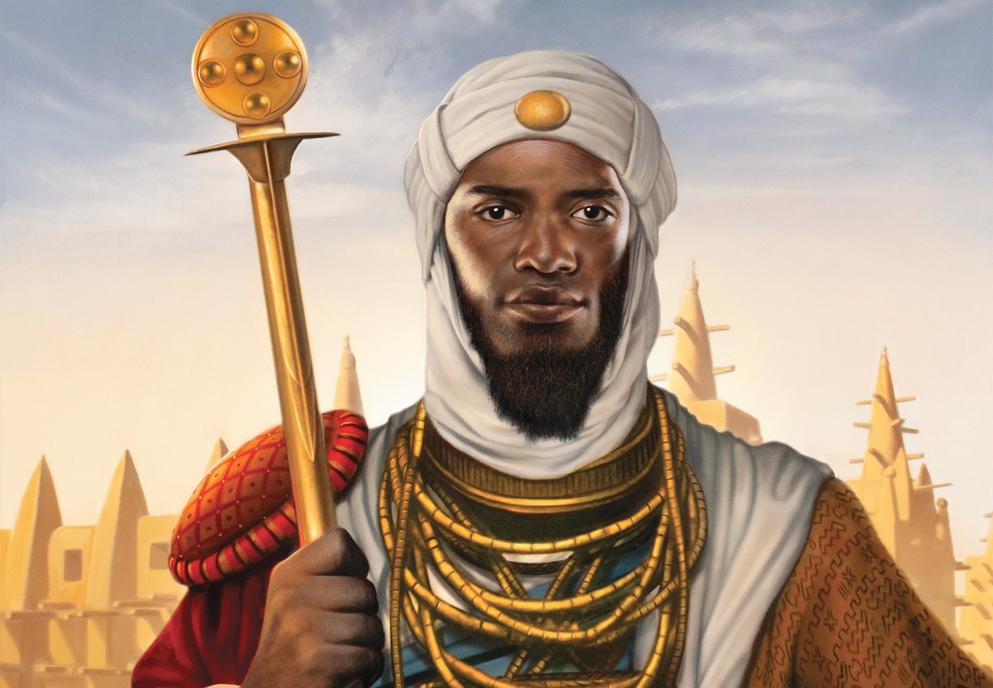
| Aspect | Details |
|---|---|
| Source of wealth | Gold mines, salt trade, control over trade routes |
| Notable event | 1324 Hajj pilgrimage with extravagant gold distribution |
| Comparisons | Other monarchs had wealth but less documented or publicly displayed |
| Historical challenges | Measuring ancient wealth is imprecise and culturally variable |
| Legacy | Symbol of immense wealth, amplified by global stories and economic impact |
- Mansa Musa’s control over gold resources was exceptional but not uniquely the greatest among all monarchs.
- His pilgrimages produced a visible and lasting impression of wealth unmatched at the time.
- Wealth comparisons across history remain speculative due to differing economic systems and record-keeping.
- Modern claims about his wealth rely heavily on narrative impact rather than exact figures.
Why is Mansa Musa Considered the Richest Person in History, When He Wasn’t Even the Richest Monarch During His Lifetime?
Mansa Musa earns the crown as the richest person in history not just because of the size of his wealth, but because of how his riches reshaped history, culture, and the world’s perception—despite contemporaries who might have rivaled or surpassed him monetarily. But how does that square with the fact that some monarchs of his era were arguably wealthier or more powerful? Let’s unpack this paradox by exploring Mansa Musa’s wealth source, the challenge of measuring ancient fortune, and why his legend endures.
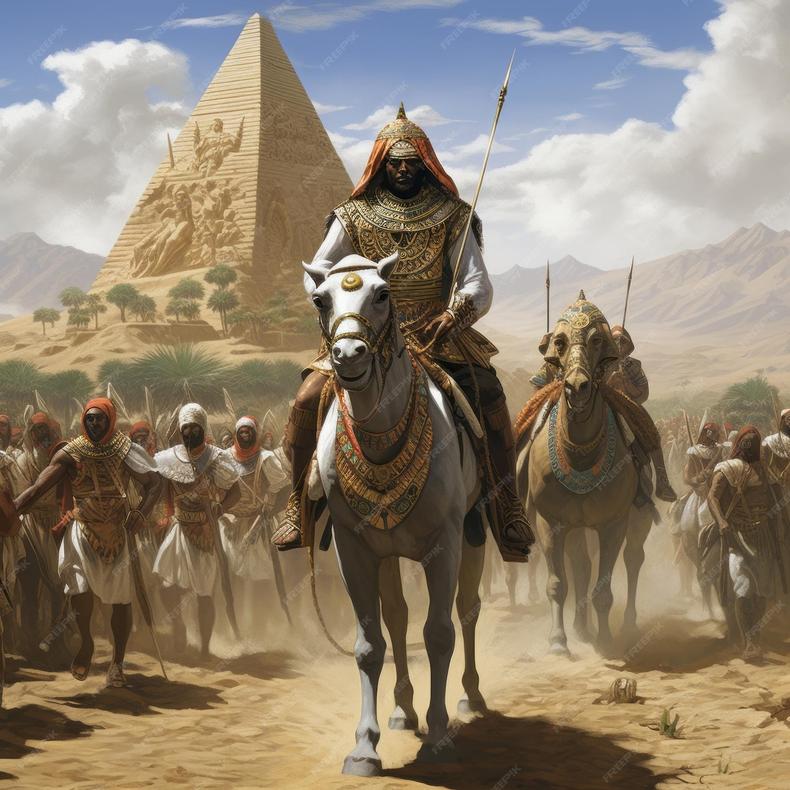
So buckle up—no proverbial camel rides needed—to understand why the 14th-century ruler of the Mali Empire holds this gold-standard reputation.
The Source and Showmanship of Mansa Musa’s Wealth
Mansa Musa’s wealth primarily stems from the vast reserves of gold within the Mali Empire, which, during his reign (1312-1337 CE), controlled nearly half of the Old World’s gold supply. He didn’t just sit on piles of gold; he was a gold king extraordinaire.
This wasn’t mere personal hoarding. Mansa Musa’s riches were rooted deeply in Mali’s natural resources—gold mines, trade routes, and taxation on commerce. This blend made his wealth broad, durable, and entwined with his empire’s economic system.
As highlighted in detailed discussions on Reddit by user /u/mikedash, Mansa Musa’s display of wealth was as dramatic as it was legendary. His 1324 pilgrimage to Mecca (the Hajj) reportedly involved a caravan of 60,000 people and 80 to 100 camels, each carrying hundreds of pounds of gold.
This wasn’t just an ostentatious parade; it was a geopolitical event. He distributed gold so liberally along the route that local economies in Cairo and Mecca experienced significant inflation. Imagine inflating the economy just by walking through it!
Why Measuring Ancient Wealth is Like Chasing Sand
Attempting to place a monetary value on Mansa Musa’s fortune is a classic case of “watching clouds and guessing shapes.” /u/DrAlawyn, an expert in history’s financial intricacies, points out that ancient wealth measurement encounters hurdles like fluctuating gold values, differences in currency systems, and the lack of precise records.
Translation? Calculating exact net worth for figures like Mansa Musa or other monarchs is more guesswork than hard fact. Plus, they didn’t have spreadsheets or bank accounts—gold bars and land were the ledger.
Additionally, wealth wasn’t just about precious metals. Other monarchs might have had sprawling territories, armies, or influential religious positions rivaling or exceeding Mali’s gold stash in intangible value. So who was richer? Depends on your yardstick.
The Wealthiest Monarchs of Mansa Musa’s Time: A Different Tale
While Mansa Musa dazzled with gold, other monarchs ruled vast domains with abundant wealth. The Yuan Dynasty in China, the Delhi Sultanate in India, and regions of the Islamic Caliphates were powerful, wealthy, and politically mighty.
For example, some rulers commanded extensive territories rich in resources and manpower. Wealth in medieval times was multidimensional—counting treasure chests is just part of the story.
Yet, none of these monarchs ignited the popular imagination or injected as much tangible gold into the global economy in such a memorable way as Mansa Musa. His kingdom was smaller but his impact on economics and culture was immense and lasting.
Why Mansa Musa’s Reputation Shines Brighter Than Coins
The very event that catapulted Mansa Musa into the annals of richest-in-history lore is his celebrated pilgrimage to Mecca. When a king literally travels with a fortune in gold, governments and historians take note.
This pilgrimage became a symbol of wealth, devotion, and global connectivity. It spread Mali’s fame far beyond Africa’s borders. Mansa Musa funded the construction of mosques and universities, particularly in Timbuktu, turning the city into a beacon of Islamic learning and culture.
He made wealth visible, tangible, and culturally relevant. The stories of his generosity and opulence have echoed through centuries. While other rulers had wealth, their fortunes often lacked such public, documented display with lasting cultural impact.
Moreover, his legacy is enhanced by art, architecture, and scholarship sponsored by his reign—concrete proofs of wealth beyond mere treasure. These lasting contributions strengthen his image as historically the richest.
The Takeaway: Wealth Is More Than Gold Bars
Mansa Musa’s story teaches us that wealth isn’t simply about who has the most coins. It is about how that wealth influences the world’s economy, culture, and history. Through generosity, piety, and strategic use of resources, Mansa Musa turned personal fortune into global legend.
People still debate if he was the absolute richest monarch of his time. But few argue against his unmatched influence as a wealthy ruler whose name remains synonymous with riches.
Here’s a quick summary:
- Mansa Musa’s fortune was based on Mali’s gold mines, making him fabulously wealthy.
- His 1324 Hajj pilgrimage displayed staggering wealth, impacting economies en route.
- Comparing his wealth to contemporaries is complicated due to different wealth forms and poor ancient record-keeping.
- Other monarchs might have technically had more resources, but none left as visible or culturally significant an economic footprint.
- His patronage of architecture and education immortalized his riches beyond mere monetary value.
- His reputation as “richest person in history” mixes fact with folklore, but the impact and stories behind his wealth are undeniably compelling.
In the end, Mansa Musa’s story isn’t just about wealth. It’s about how wealth touches lives, inspires minds, and shapes the future. And that might be why history remembers him as the wealthiest of all, even if some dusty scrolls whisper of richer monarchs in his time.
So next time you hear claims of the richest person ever, ask yourself—*Is it just the coins, or the king who made gold legendary?*

